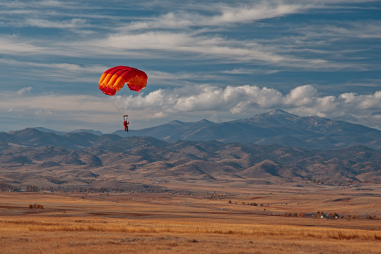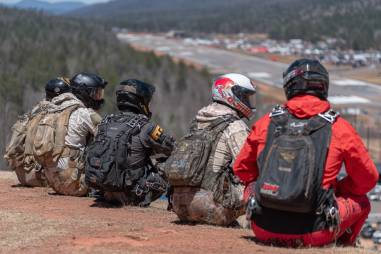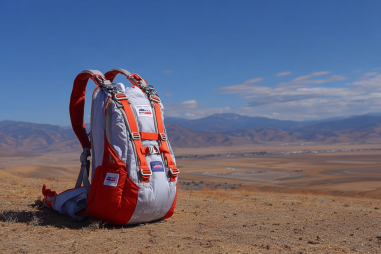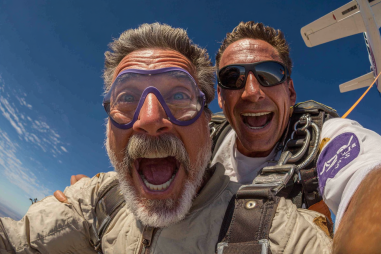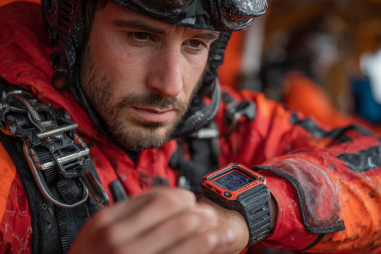Embarking on your skydiving adventure is thrilling, but before you take that exhilarating leap from the plane, it’s crucial to understand the gear that keeps you safe and ensures your jump goes smoothly. Skydiving gear is specifically designed to protect you, control your descent, and enhance your overall experience. If you’re a beginner, familiarizing yourself with the essentials will boost your confidence and help you enjoy every moment in the skies.
The Main Parachute: Types and Features
The main parachute is the core piece of equipment every skydiver relies on during their descent. It’s designed to slow you down from freefall speeds to a safe landing velocity. Most modern main parachutes are rectangular or “ram-air” canopies, which offer excellent maneuverability and control. These canopies are constructed from lightweight, durable nylon fabric and consist of cells that inflate to give the parachute its wing-like shape.
For beginners, parachutes generally come in various sizes based on jump weight and skill level. Larger parachutes provide a gentler, more stable ride, which is ideal when you’re just starting out. Features to look for include steering toggles that allow you to control direction and speed, and a slider, which slows the parachute’s deployment to reduce opening shock on your body. Understanding how to handle your main parachute and its features is fundamental to safe skydiving.
Reserve Parachute and Why It Matters
While the main parachute is your primary tool during a jump, the reserve parachute is literally your safety backup and often referred to as your “lifesaver.” It’s packed separately and carefully inspected by certified riggers to ensure it deploys perfectly when needed. Skydiving equipment mandates that every jumper has a reserve parachute to use if the main canopy malfunctions.
The reserve parachute typically has its own deployment system and is packed to higher standards with a slightly different design optimized for reliability and faster opening. To increase safety, some rigs are equipped with an Automatic Activation Device (AAD), a smart technology that automatically deploys your reserve if it senses you’re descending too fast at low altitude and haven’t deployed your main parachute. For beginners and experienced skydivers alike, the reserve parachute is a critical piece of gear that provides peace of mind above all else.
Wearing the Right Helmet and Goggles
Protection during skydiving starts at the head. Wearing a helmet is a must-have safety measure that protects you from impacts during exit, freefall, canopy flight, and landing. Helmets come in different styles, from lightweight open-face models to full-face versions that offer added wind and debris protection. For beginners, a sturdy, well-fitting helmet that doesn’t obstruct your vision or hearing is essential.
Goggles protect your eyes from the intense wind blast at speeds exceeding 120 miles per hour during freefall. Quality goggles provide a clear field of vision, secure fit, and anti-fog features to keep your sight unobstructed throughout the jump. Many helmets have built-in goggles or visors, but standalone goggles are also a popular choice, especially for first-time jumpers who want to test different options.
Harness and Container Overview
The harness and container system is where your parachutes are securely packed and attached to your body. The harness is made of strong webbing straps that wrap around your shoulders, chest, and legs, ensuring the parachute stays firmly in place. The container holds both the main and reserve parachutes and can vary in design depending on the manufacturer.
A proper fit is critical because an ill-fitting harness can affect your comfort and safety during the jump. Beginners should work closely with an instructor or rigger to ensure their harness is adjusted perfectly. Modern containers are also designed to be ergonomic and lightweight, minimizing drag and allowing for better control during freefall and canopy flight.
Altimeters: Digital vs. Analog
Knowing your altitude at every moment during the jump is vital, and that’s where altimeters come in. They tell you when to deploy your parachute by measuring the distance above the ground. There are two primary types to consider:
- Analog altimeters: These are mechanical, dial-style devices that many skydivers prefer for their simplicity and reliability. They display altitude with a traditional needle pointer and are highly visible even in bright conditions.
- Digital altimeters: These offer more precise readouts, often including additional features like audible alerts, multiple jump profiles, and backlighting. They’re getting increasingly popular, especially among newer skydivers.
Choosing between analog and digital altimeters is often a matter of personal preference. Beginners should train with both types if possible but ensure they fully understand how to read and respond to their altimeter during the jump.
Clothing Considerations for Skydiving
What you wear for your jump can significantly affect comfort and safety. Since you’ll be exposed to cold temperatures at high altitude, dressing in layers is wise. Most drop zones recommend:
- Comfortable, close-fitting athletic wear like a jumpsuit, leggings, or sweatpants that don’t restrict movement.
- A long-sleeve shirt or base layer for insulation.
- Closed-toe shoes with secure laces, such as sneakers or trainers.
For beginners, many centers provide jumpsuits that fit over your clothes, which help reduce wind resistance and protect your gear. Avoid bulky clothing or accessories that could snag your equipment or interfere with movement during freefall and landing.
Safety Checks Before Every Jump
Before stepping onto the plane, performing thorough safety checks on all your gear is non-negotiable. These pre-jump inspections ensure everything is in perfect working order. Some key checkpoints include:
- Verifying your main and reserve parachutes are correctly packed and secured.
- Ensuring your helmet fits snugly and goggles are comfortable and clear.
- Checking harness straps for proper tightness and that all buckles are fastened securely.
- Confirming your altimeter is working and set correctly for the jump.
- Double-checking your Automatic Activation Device, if equipped.
Additionally, talking through your jump plan with instructors and fellow jumpers reinforces safety awareness and builds confidence. Rigorous gear checks and preparation routines are the backbone of safe skydiving and help you build good habits from the start.
Preparing Confidently with the Right Gear
Mastering the essentials of skydiving gear gives beginners the foundation needed for a safe, enjoyable experience in the sky. From the main and reserve parachutes to your helmet, harness, altimeter, and appropriate clothing, each component plays a critical role in your safety and performance. Taking the time to understand, inspect, and feel comfortable with your equipment will help you focus on the thrill of your first jump rather than worrying about what’s strapped to your body.
Skydiving is an incredible way to push your limits, connect with the outdoors, and experience freedom unlike any other. When you prepare with the right gear essentials and keep safety at the forefront, your adventure will be all the more rewarding.



